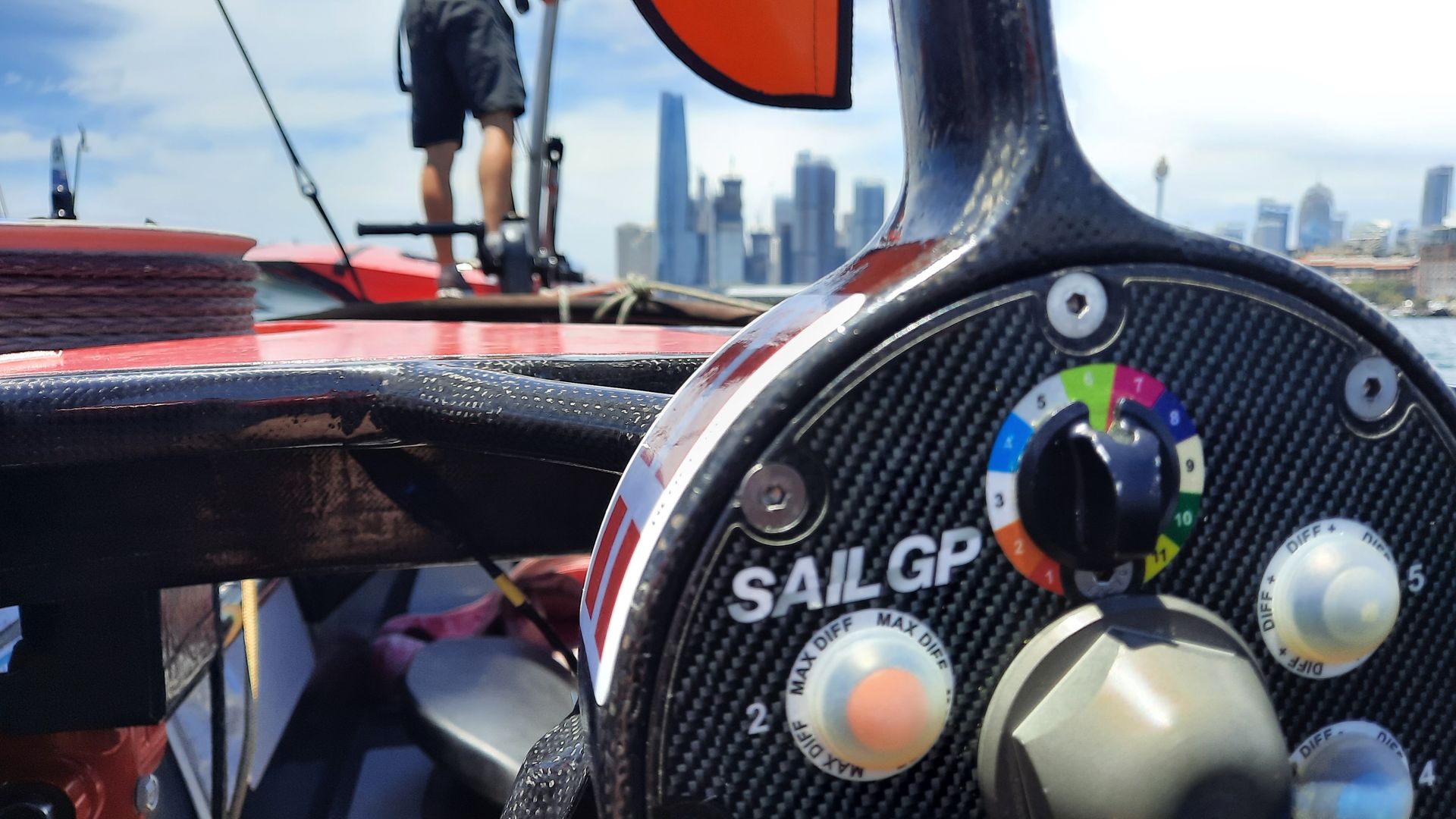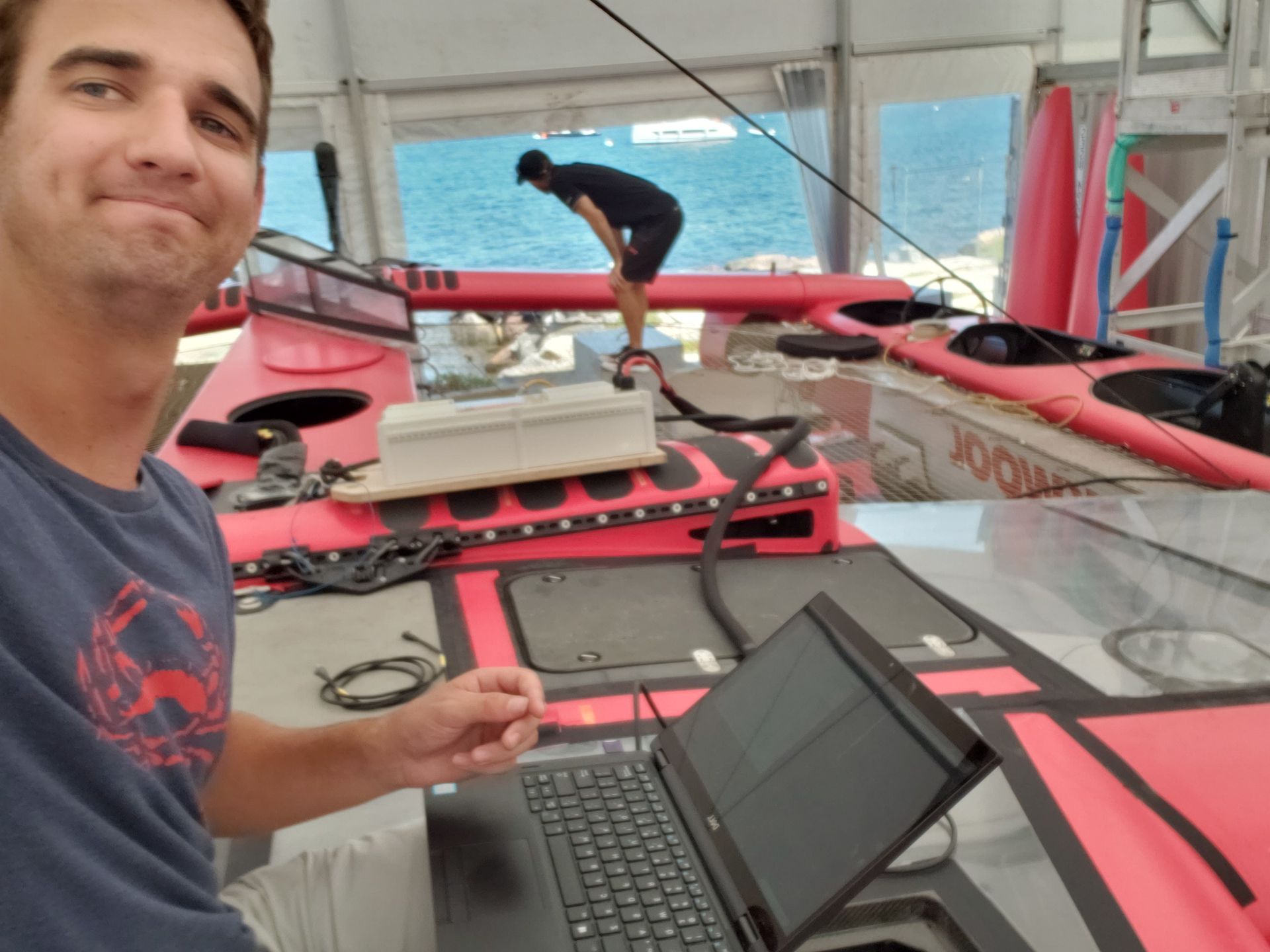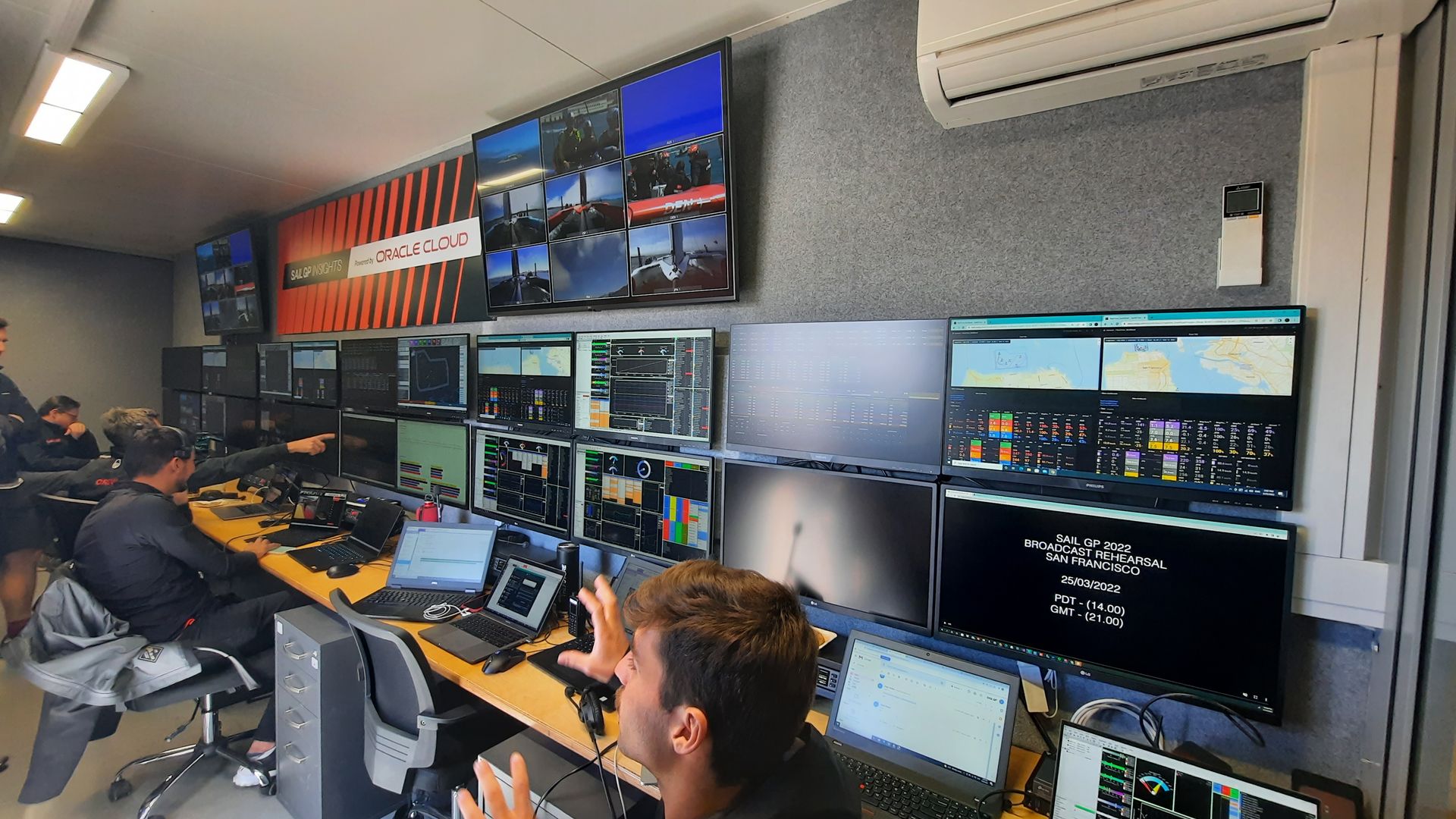SailGP
SailGP - Systems engineer for season 2-3 SailGP
At a Glance
- Upgraded & maintained onboard control systems across fleet
- Conducted pre-race systems checks to ensure every sensor, button, and actuator was operational.
- Monitored live telemetry and onboard comms during races, diagnosing and advising on critical systems issues.
- Coordinated rapid troubleshooting and repairs between races to maximize fleet reliability for live broadcasts.
- Implemented fleet-wide control software upgrades to improve reliability and ease of maintenance.
___________________________________________________________

My Role
SailGP Overview
SailGP is a global racing circuit featuring nine identical 50-foot foiling catamarans — ultra-high-performance, hydraulically powered, rigid-wing sailboats originally developed for the America’s Cup. Unlike the America’s Cup, where absolute performance can outweigh reliability, SailGP’s one-design format demands identical configurations, high reliability, and streamlined maintenance to ensure every boat makes the start line.
Systems Integration & Pre-Race Checks
Each event took place in a new city, with the boats shipped, reassembled, and made race-ready in just days. Once mechanical, hydraulic, and electrical teams completed their checks, I served as the final systems gatekeeper — verifying that every sensor, button, hydraulic ram, and software-controlled function worked seamlessly together. These integration checks ensured all systems were aligned before rolling the boats out for racing.

Live Telemetry & On-Water Support
During racing, I worked from the Systems Command Center, monitoring real-time data from the fleet using a Cosworth control and diagnostics system (adapted from motorsports). If a fault occurred — like a board not raising when commanded — I had seconds to diagnose the cause from telemetry, communicate with the crew, and recommend an immediate fix. This rapid decision-making was critical in the tense minutes before a race start, often under live TV coverage.

Post-Race Troubleshooting & Upgrades
After racing, I gathered feedback from sailors, reviewed logs, and diagnosed any reported issues. Some fixes were straightforward, like swapping a failed sensor. Others involved deeper software updates, configuration changes, or hardware adjustments that had to be rolled out to the entire fleet. Our small three-person systems team often worked late into the night to ensure every boat was ready for the next day’s racing.
Between events, I collaborated on system upgrades to improve reliability, reduce maintenance time, and scale the fleet’s operational readiness as the league grew.
Impact & Skills
This role combined high-pressure troubleshooting, systems integration, fleet-wide upgrades, and global event support. It gave me extensive experience in:
- Real-time fault diagnosis and high-pressure decision making
- Integrating complex mechanical, hydraulic, and software systems
- Delivering reliability improvements to high-performance technology
- Supporting complex electro-mechanical systems in harsh marine environments